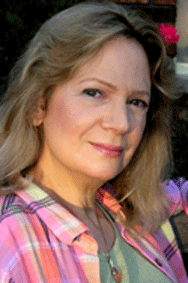Do you remember your first favorite book? Was it one of the original 12 Little Golden Books like Pokey Little Puppy (the top-selling children’s book until Harry Potter came along)? Perhaps it was a picture book like Goodnight Moon or The Hungry, Hungry Caterpillar, an introduction to rhyming through Green Eggs and Ham, a collection of morality tales like Aesop’s Fables, or a book of short stories based on lovable characters like Peter Rabbit and Winnie the Pooh?
Scholars have differing opinions about when books started to be written specifically for children but they agree that today’s children’s literature (also known as juvenile literature) evolved from the contributions of many cultures. Even before the invention of books, adults told tales to children. Many children’s tales in modern times have their origins in the spoken narratives of ancient storytellers. Every corner of the world traces its storytelling and books to its particular history and culture, through evolution and revolution across the ages.
The first book published in what would become the United States was a catechism written in verse for children, known as Spiritual Milk for Boston Babes. The author was Puritan John Cotton. The book was published in Boston in 1646. By the 1800s, classic children’s literature from many other countries was translated into English for American children. Examples include The Swiss Family Robinson (Switzerland), Grimm’s Fairy Tales (Germany) and The Adventures of Pinocchio (Italy). From England came Alice’s Adventures in Wonderland, The Jungle Book and Wendy and Peter (known here as Peter Pan). The 1800s also saw wonderful children’s literature written and published in the U.S. Examples are Little Women and Tom Sawyer.
While the period between WW I and WW II saw a noticeable decline in children’s literature in Europe, libraries in North America spurred growth by creating demand and opportunity to bring children and books together. Publishers followed with reviews and events geared toward children’s books. This period saw the introduction of book series from such authors as Laura Ingalls Wilder (Little House on the Prairie) and Dr. Seuss.
As Baby Boomers came of reading age in the 1950s, they ignited a boom in juvenile literature. In addition to such books as Charlotte’s Web and the imaginatively illustrated books by Maurice Sendak, non-fiction books flourished in the children’s market.
It’s no surprise that the Harry Potter series, launched in 1997, became the best-selling children’s book series of all time. The plot and writing have drawn legions of admirers among adults as well as children because J.K. Rowling respected readers of all ages.
The growing popularity of eReaders (Kindle, Book, Kobo, etc.) raises questions and concerns about juvenile literature. While such devices make it easier to access books, they take away the physical pleasures associated with traditional books. Books on eReaders will never grow old with us; never greet us as we enter our homes, saluting us from bookshelves, inviting our fingers to dance through pages that evoke the memories of where and when we first met.
As holidays approach and you’re wondering what gift to give a special child in your life, give a book. Make it a real, physical book. Save the eReaders for later. If you really love that child, don’t wait for the holidays. Celebrate now by introducing your special child to a book that could become their first love.

